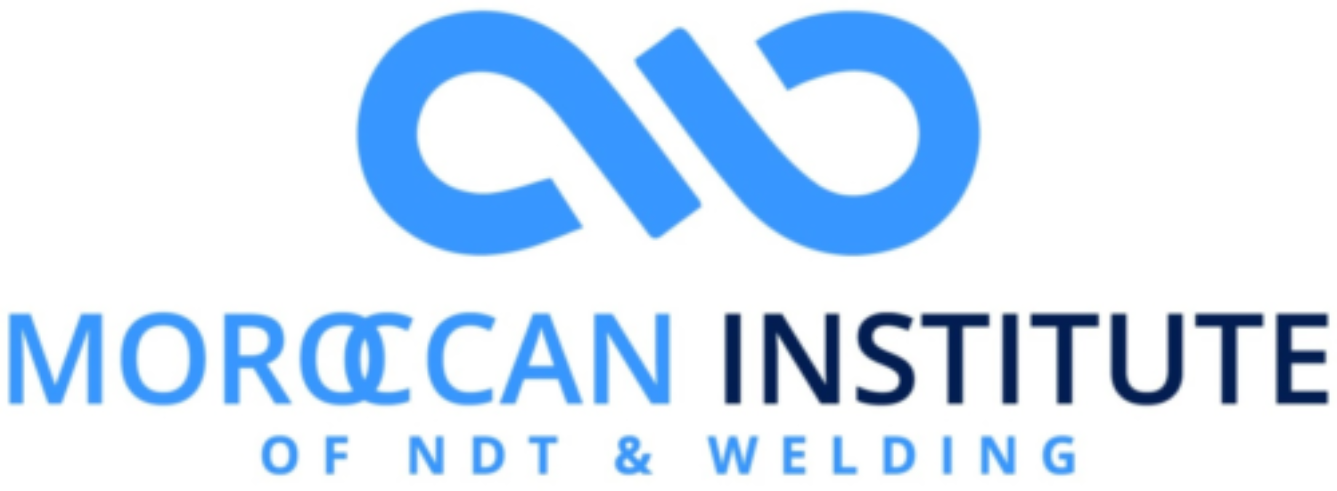Understanding NDT Methods: Ensuring Safety and Reliability in Industrial Applications
Non-Destructive Testing (NDT) methods are crucial in various industries for evaluating the properties of materials, components, and systems without causing damage. These methods play a vital role in ensuring safety, reliability, and cost-effectiveness by detecting defects and irregularities that could lead to failures. In this article, we will delve into the most commonly used NDT methods, their applications, and the benefits they offer. Furthermore, we will highlight how our services at the Moroccan Institute of NDT & Welding can help you achieve excellence in NDT and welding practices.
1. Visual Testing (VT)
 Overview: Visual Testing (VT) is the most basic form of NDT, involving a visual examination of a material or component to identify surface defects. Despite its simplicity, VT is highly effective when used correctly.
Overview: Visual Testing (VT) is the most basic form of NDT, involving a visual examination of a material or component to identify surface defects. Despite its simplicity, VT is highly effective when used correctly.
Applications:
- Weld inspection to detect surface cracks, porosity, and undercuts.
- Examination of castings and forgings for surface defects.
- General inspection in maintenance routines.
Advantages:
- Cost-effective and easy to perform.
- Immediate results.
Challenges:
- Limited to surface defects.
- Requires good lighting and access to the inspection area.
2. Ultrasonic Testing (UT)
 Overview: Ultrasonic Testing (UT) uses high-frequency sound waves to detect internal flaws in materials. The sound waves are transmitted through the material, and any discontinuities reflect the waves back, which are then analyzed.
Overview: Ultrasonic Testing (UT) uses high-frequency sound waves to detect internal flaws in materials. The sound waves are transmitted through the material, and any discontinuities reflect the waves back, which are then analyzed.
Applications:
- Inspecting welds in pipelines and pressure vessels.
- Detecting internal defects in metal and composite materials.
- Thickness measurements for corrosion monitoring.
Advantages:
- Can detect both surface and subsurface defects.
- High accuracy and depth penetration.
Challenges:
- Requires skilled operators.
- Interpretation of results can be complex.
3. Radiographic Testing (RT)
 Overview: Radiographic Testing (RT) involves using X-rays or gamma rays to create images of the internal structure of a component. The resulting radiographs are examined for defects.
Overview: Radiographic Testing (RT) involves using X-rays or gamma rays to create images of the internal structure of a component. The resulting radiographs are examined for defects.
Applications:
- Inspection of welds for porosity, cracks, and inclusions.
- Examination of castings and complex assemblies.
- Detection of corrosion under insulation (CUI).
Advantages:
- Provides a permanent record of the inspection.
- Can inspect complex shapes and multi-layered structures.
Challenges:
- Safety concerns due to radiation exposure.
- Expensive and requires specialized equipment.
4. Magnetic Particle Testing (MT)
Overview: Magnetic Particle Testing (MT) is used to detect surface and near-surface defects in ferromagnetic materials. The component is magnetized, and iron particles are applied to the surface, which gather around defects, making them visible.
Applications:
- Inspection of welds in ferromagnetic materials.
- Examination of castings, forgings, and machined parts.
- Detection of fatigue cracks in industrial components.
Advantages:
- Simple and quick to perform.
- Highly sensitive to surface defects.
Challenges:
- Limited to ferromagnetic materials.
- Surface preparation is required for accurate results.
5. Penetrant Testing (PT)
Overview: Penetrant Testing (PT) involves applying a liquid dye to the surface of a component. The dye penetrates surface-breaking defects and, after removal of excess dye, a developer is applied to draw the dye out of the defects, making them visible.
Applications:
- Inspection of non-porous materials such as metals, plastics, and ceramics.
- Detection of surface cracks, porosity, and leaks.
- Used in aerospace, automotive, and manufacturing industries.
Advantages:
- Simple and cost-effective.
- Can inspect large areas quickly.
Challenges:
- Limited to surface defects.
- Requires thorough cleaning before and after inspection.
6. Eddy Current Testing (ET)
Overview: Eddy Current Testing (ET) uses electromagnetic induction to detect flaws in conductive materials. An alternating current is passed through a coil, creating an eddy current in the material. Any disruptions in the eddy current flow indicate defects.
Applications:
- Inspection of heat exchanger tubes and aircraft structures.
- Detection of surface and near-surface cracks in conductive materials.
- Thickness measurements and coating inspection.
Advantages:
- Can detect small cracks and corrosion.
- No contact with the material is required.
Challenges:
- Limited to conductive materials.
- Requires skilled operators and specialized equipment.
7. Infrared Thermography (IRT)
Overview: Infrared Thermography (IRT) uses infrared cameras to detect thermal anomalies on the surface of a material. These anomalies can indicate underlying defects, changes in material properties, or thermal insulation issues.
Applications:
- Inspection of electrical systems for overheating components.
- Building inspections to detect insulation deficiencies and moisture intrusion.
- Monitoring mechanical systems for excessive friction or wear.
Advantages:
- Provides real-time results.
- Can inspect large areas quickly and without contact.
Challenges:
- Limited to surface or near-surface anomalies.
- Requires interpretation of thermal patterns.
8. Leak Testing
Overview: Leak Testing involves various methods to detect and locate leaks in pressurized systems. Techniques include bubble testing, pressure decay, and mass spectrometry.
Applications:
- Inspection of pipelines, pressure vessels, and storage tanks.
- Ensuring the integrity of sealed components in automotive and aerospace industries.
- Detecting leaks in HVAC systems and refrigeration units.
Advantages:
- Highly sensitive to small leaks.
- Can be applied to a wide range of systems and components.
Challenges:
- Some methods can be time-consuming.
- Requires specialized equipment for certain techniques.
How Our Services Can Benefit You
At the Moroccan Institute of NDT & Welding, we offer comprehensive NDT Level 3 services, NDT training courses, and welding training programs designed to equip your team with the knowledge and skills necessary to implement effective NDT practices. Our expert consultants and instructors have extensive industry experience, ensuring that you receive top-tier training and support tailored to your specific needs.
By partnering with us, you can:
- Enhance the safety and reliability of your products and infrastructure.
- Reduce costs associated with repairs and downtime by detecting defects early.
- Ensure compliance with industry standards and regulations.
- Gain a competitive edge through advanced NDT and welding techniques.
Contact us today to learn more about how our services can help you achieve excellence in NDT and welding. Whether you need expert consulting, professional training, or comprehensive inspection services, the Moroccan Institute of NDT & Welding is your trusted partner in ensuring the integrity and safety of your operations.

